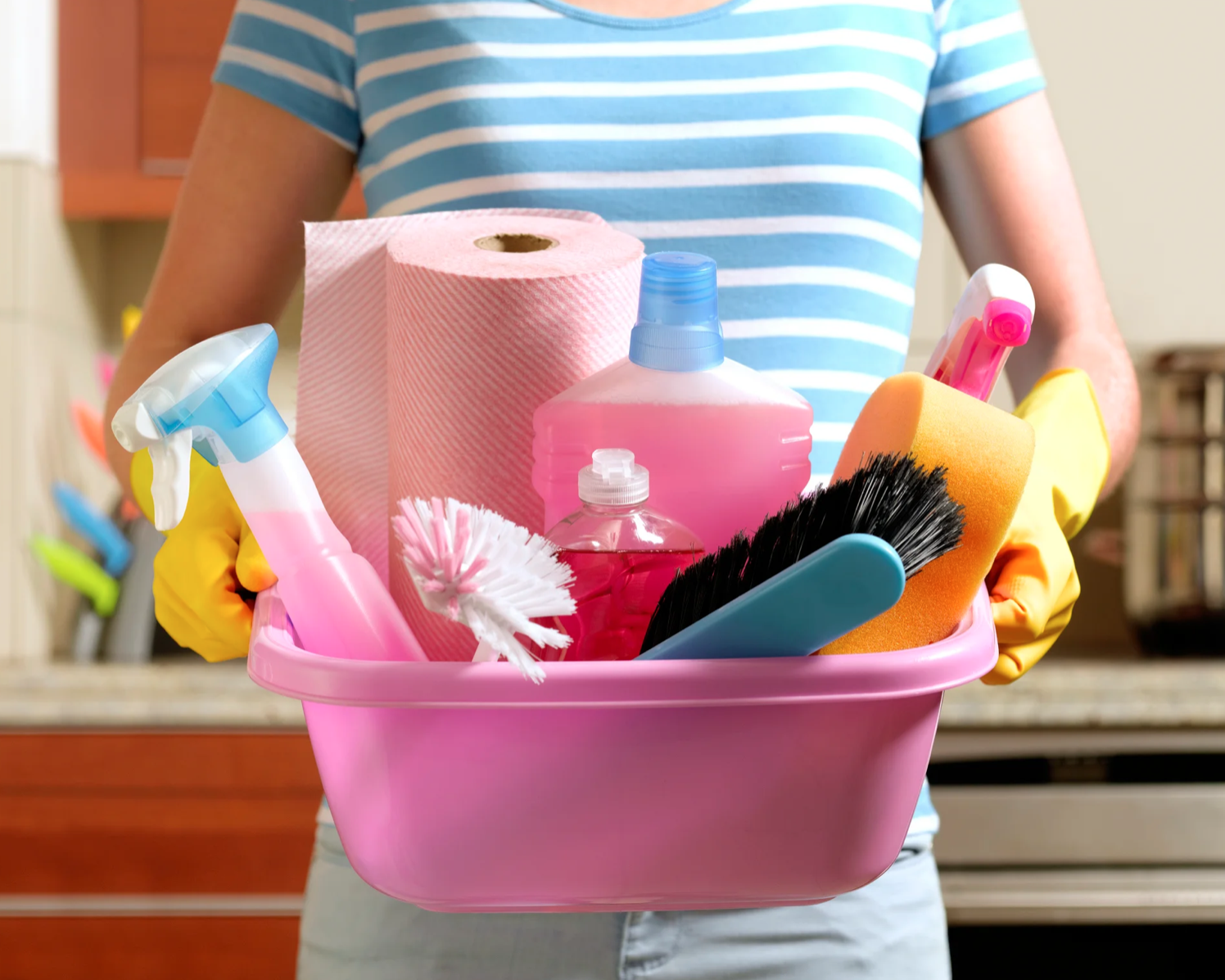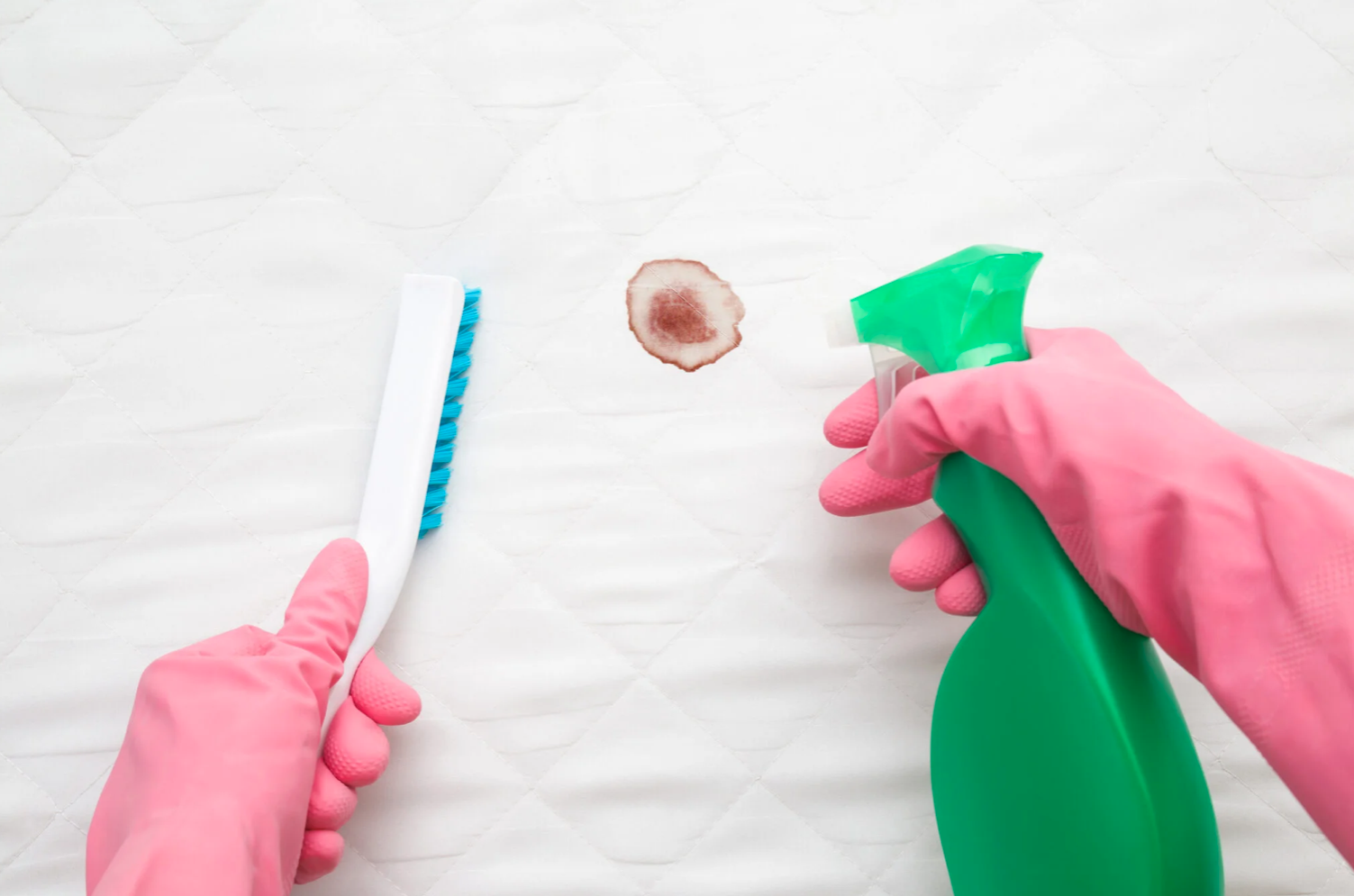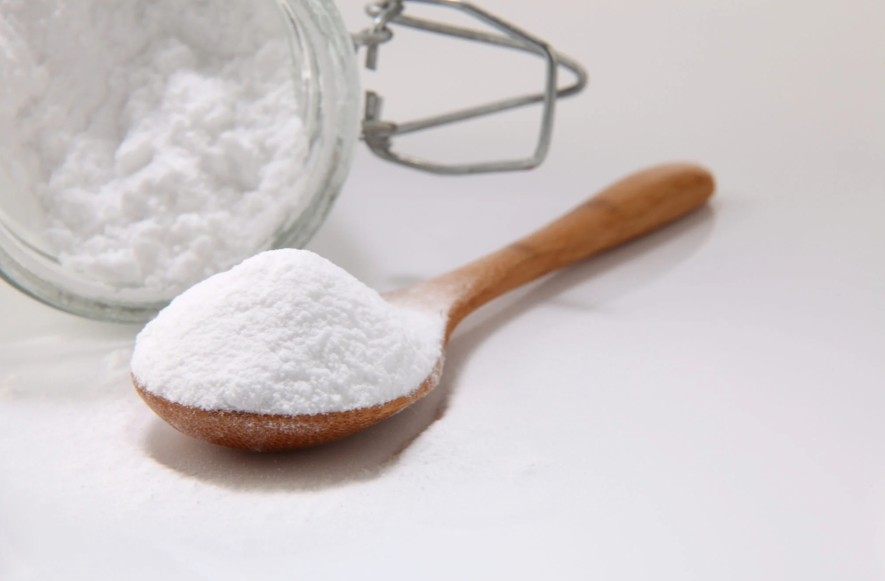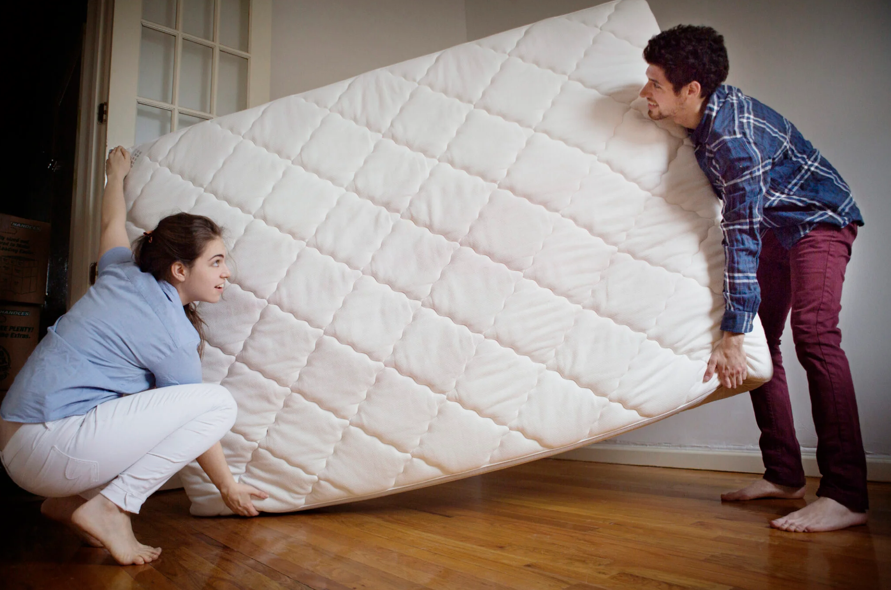How to Clean a Mattress: A Step-by-Step Guide
RH Business Marketing Solutions
Written by
A mattress is prone to soiling and needs regular care. Pet stains, food, perspiration, and dust mite accumulation are just a few things that can affect its life. Dust mites, particularly, can aggravate allergies and even cause asthma. The problem may be more common than you think — the American Lung Association says four out of five households have detectable levels of dust mite allergens.
You spend a good part of each day on your mattress sleeping. Regardless of what is soiling it, maintenance is the key to keeping your investment clean and hygienic to minimize allergies and help you enjoy a restful night’s sleep.
Benefits of Cleaning Your Mattress
Creating a maintenance routine to clean your mattress regularly comes with benefits. They include:
Reduce allergens: As mentioned, dust mite allergens can cause or aggravate allergies and asthma. Getting rid of microscopic creatures can help reduce allergies.
Promote indoor air quality: A clean mattress is an odor-free one. Mattresses that are stained can develop foul odors and release contaminants that can affect your room’s air quality.
Extend mattress life: Keeping your mattress fresh and clean is likely to extend its life, saving you money in the long run.
Achieve a healthier night’s sleep: Knowing your mattress is clean and contaminant-free can bring you the peace of mind you need to sleep better. Not to mention, you won’t be breathing in allergy-inducing contaminants throughout the night.
How Often Should You Clean Your Mattress
A mattress has nooks and crannies where microbes, stains, and odors can hide. Moisture can be absorbed into the surface, providing the perfect environment for biological contaminants to thrive and multiply.
Even if you don’t drink or eat on your mattress, your perspiration while you sleep can feed the microbes that live in the fabric and folds. Sheets and a quality mattress cover are a good front line to protect your mattress. You don’t have to clean a mattress as often as you would clean your bedding, but you should still thoroughly clean your mattress every three to six months, and more often if pets sleep with you or you occasionally eat in bed.
Considerations for Baby Mattresses
Babies have sensitive respiratory systems. Maintaining a clean, dust-mite-free mattress is essential. However, avoiding harsh chemicals and cleaning products containing artificial fragrances would be a good idea. Give your baby’s mattress an inspection and light cleaning every month or two. Check the manufacturer label on the mattress for cleaning guidance. Simply vacuuming the mattress and giving it a quick wipe down with a damp cloth may be all you need to do. More importantly, wash baby’s bedding regularly and consider using a dye- and fragrance-free detergent.
Types of Mattresses
Mattresses come in various types of materials that all have their own requirements for care and cleaning. Here is an overview of the different types of mattresses:
Memory foam
Memory foam mattresses are among the most popular today but require more care when cleaning than traditional innerspring beds. Memory foam is petroleum-based. The material can have adverse reactions to certain cleaning supplies, such as bleach and harsh store-bought cleaners, which can also yellow or stain the foam. Here’s more on how to clean a foam mattress.
Innerspring
Innerspring mattresses are usually covered in polyester or cotton material. They may be more responsive to traditional cleaners. However, avoid overly wetting the mattress when cleaning, as mold and mildew can develop if it doesn’t dry properly.
Gel mattress
Gel mattresses are similar to memory foam. The foam is infused with a special gel to give the mattress a different feel or cooling sensation. As with memory foam mattresses, special care should be used to make sure chemicals don’t react with the mattress.
Latex mattress
Latex mattresses are typically made of natural rubber. Most people who purchase one choose it for its eco-friendly qualities. To maintain its natural properties, avoid synthetic chemicals and fragrances when cleaning. A vacuum and a damp rag with some mild detergent can go a long way.
Hybrid mattress
A hybrid mattress can be a combination of innerspring, foam, and gel. Refer to the mattress label for help on how to properly clean and care for a hybrid bed. The top layer may be foam or gel and may need extra care.
How to Clean a Mattress
If you are ready to start a regular mattress cleaning routine, consider following these steps to clean a mattress.
1. Strip the bed and wash all the bedding
Remove all the bedding and any mattress pads and wash them. The layers over the mattress are the first line of defense against stains and moisture, so wash them regularly.
2. Assess the damage
While the bedding washes, look for stains and discolorations and take a moment to decide if any lingering odors need to be addressed. Depending on whether the odor or stains are strong, you can decide how lightly (or aggressively) you will need to clean the bed.
3. Gather your mattress cleaning supplies
Now that you have an idea of how stained the mattress is, you can gather what you’ll need. If the mattress is lightly stained, all you may need is a vacuum and wipe-down with a damp rag. Tougher odors or stains may need some extra TLC. Gather the following supplies as needed:
A vacuum fitted with an upholstery attachment
Enzyme cleaner or mild dish soap for stains
Baking soda to sprinkle on the bed to absorb odors before vacuuming out or to create a paste to spot clean with
Absorbent cleaning cloths that can soak up moisture
Water, preferably in a spray bottle to control how much you wet the mattress
What not to use on your mattress
Avoid harsh chemicals such as bleach or ammonia. Do not over-saturate the mattress, or it may not properly dry, causing bigger problems with mildew or mold later. Artificial perfumes and fragrance sprays may seem like a good idea to hide odors but could affect air quality.
4. Vacuum the mattress
Take a good while to vacuum the mattress thoroughly. Vacuuming is one of the best ways to get rid of dust mites, dander, and other microbes. Get into all the bed’s nooks and crannies with the upholstery brush. If there are buttons, try and brush under them to loosen dust and debris and vacuum it up.
5. Spot clean
You may need to target specific stains, odors, or discolorations by spot cleaning them. There are different stain removers and cleaners you could use that work for different types of stains. View our guides on how to clean a mattress based on the stain for more information.
Common mattress stains
Water: Push on the damp area with an absorbent cloth. Place the mattress in the sun (if possible) to dry out.
Coffee: Cold water may be all you need to remove the appearance of coffee stains. If the coffee contained cream or sugar, opt for a vinegar solution, enzyme cleaner, or mild soap.
Urine (pet and human): Enzyme cleaners, baking soda, or a vinegar solution can help remove the stain and associated odor.
Blood: One of the more stubborn stains to remove — avoid hot water. Clean the spot with an enzyme cleaner and cold water.
Vomit: You could use nearly any type of cleaner, from mild soap to a vinegar solution, to clean it up.
Sweat: Enzyme cleaners, mild soap, or a vinegar solution eliminates most sweat stains and odors.
Avoid soaking or over saturating a mattress, especially memory foam. Excess moisture can get absorbed and trapped deep into the mattress, providing a breeding ground for mites and other microbes, and causing issues with mold and mildew. When spot cleaning, use a dry, absorbent towel to push into the area and absorb any remaining moisture. If you can, allow the mattress to air out before you make the bed again.
How to create natural DIY stain removing solutions for stubborn stains
Avoiding harsh chemicals while you sleep can enhance your health and extend the life of your mattress. You can make your own effective cleaners using a few household supplies:
Baking soda paste: Creating a paste out of baking soda and water is an effective cleaner for a variety of stains, including dried blood, food, drinks, and more.
Vinegar solution: Vinegar is effective against odors. A 50-50 white vinegar solution can sanitize a mattress and even remove vomit or urine odors. You can always add a few drops of essential oil to your vinegar solution for a fresh fragrance.
Hydrogen peroxide: Hydrogen peroxide can lift blood and other stubborn stains. You can even mix it into a paste with baking soda and some mild detergent.
Lemon juice: A lemon juice and salt paste could help remove stains from wine, soda, or other discolorations.
6. Remove odor with baking soda
Once you’ve vacuumed and spot cleaned your mattress, you can remove any remaining odors using baking soda. Sprinkle baking soda on the entire surface of the mattress and let it sit for at least 30 minutes to an hour to give it time to absorb odors. Once the time is up, vacuum the mattress again.
7. Flip the mattress and repeat
Just when you think you are done, it’s time to do the other side. Flip the mattress and repeat the process. The good news is, there are probably not as many stains on the bottom of the mattress as the top, making the process go faster.
How to Protect Your Mattress After Cleaning
Once your mattress is cleaned and sanitized, it’s important to protect it between cleanings. Doing so will also make cleaning the mattress much faster and easier. Consider protecting your mattress with these ideas:
Avoid dust with a fitted sheet: A fitted sheet provides a barrier that keeps dust away and reduces the chances of mattress staining. It’s far easier to remove the sheet to wash than it is spot-cleaning the mattress.
Use a tightly woven allergen-proof mattress protector: A mattress protector is a heavier-duty version of a fitted sheet. It will protect your mattress from stains and odors and can prevent bed bugs and allergy-producing dust mites from taking hold in your mattress. A tightly woven fabric keeps tiny microbes and debris out from causing further trouble.
Add a mattress pad: Mattress pads can add an extra layer of comfort and protection to your mattress. There are a variety of mattress pads available, some waterproof, others featuring gel or memory foam for extra padding.
Flip and rotate regularly: If your mattress is double-sided, flipping and rotating it regularly can ensure more even wear. Even if you can’t flip the mattress, you could rotate the mattress.
When to Opt for a New Mattress
Regularly cleaning your mattress will revitalize and maintain the surface layer of your bed. However, the bed’s construction, such as the foam or innerspring, will eventually break down. You’ll need to eventually replace your mattress with a new one. When considering whether it’s time to replace your bed, consider the following:
Average lifespan of a mattress
The average mattress may last anywhere between five and ten years, depending on care, maintenance, and material. Latex foam beds may last the longest, with a span of eight to twelve years. Hybrid and innerspring mattresses may last the least, between five and seven years. A quality memory foam mattress could last between seven and ten years.
Signs your mattress is deteriorating
Although most mattresses come with suggested lifespans and warranties, a mattress could deteriorate sooner, especially if you don’t properly care for and maintain it. Some signs that your mattress is deteriorating include:
It has reached the average lifespan
You wake up with back pains, discomfort, or after sleeping poorly
The mattress squeaks
The bed appears sunken in some spots, saggy, and/or does not spring back
Foul odors cannot be removed
Your allergies have flared up at night and when you awake in the morning
Closing Thoughts
A quality mattress is one of the most important investments you’ll make for your health and well-being. Regular maintenance is essential to keep it sanitary and in the best condition possible. Taking some time every few months to inspect, clean, refresh, and rotate your mattress is well worth the effort — you’ll feel better knowing you’re sleeping on a fresh, hygienic bed.









